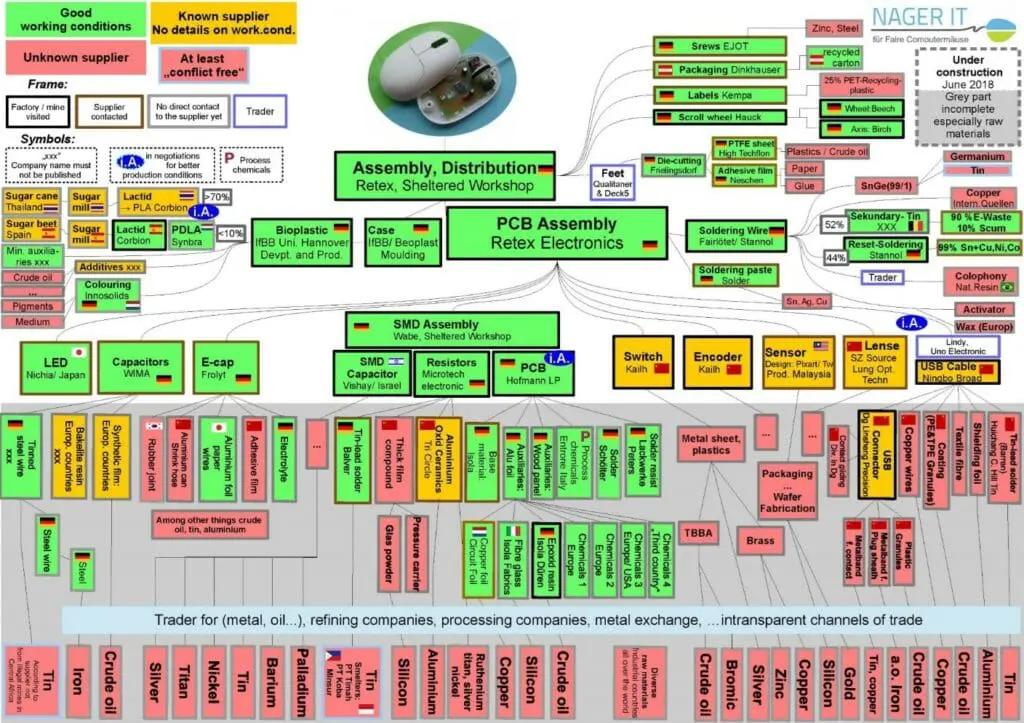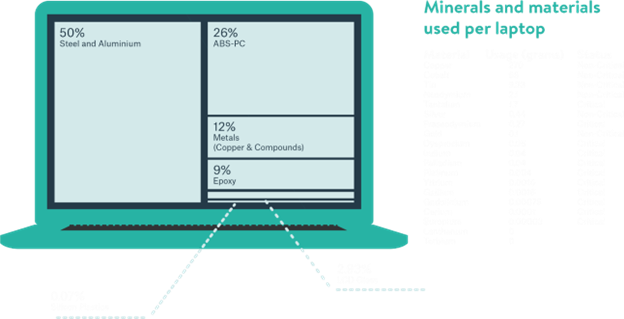We have previously discussed the impact of carbon emissions in IT and how we can be more aware of what we generate as well as how to minimise it. This article introduces IT equipment resource requirements and how they impact the environment.
Every year, tech manufacturers release their latest devices: “newer, faster, better” (so buy one!) and it can be tempting to want the newest version. What can be implicit in this mindset is that you dispose of the old one.
This raises two key questions.
1. What resources go into making new tech equipment?
2. What do we do with the discarded stuff?
The answers can raise even more questions, especially when we look at the big picture.
Finite/rare resources
IT equipment such as PCs, Macs, phones, routers etc all require complex manufacturing with a wide range of natural and manmade resources. Some of these resources are extremely rare (Europium, Palladium etc) and we are using up these non-renewables at a rapid rate. Some 2 billion iPhones have been made since its launch in 2007. When they’re gone, they’re gone!
Let’s take a straightforward example of the resources required to make a computer mouse. For such a small and relatively straightforward piece of equipment, the number of elements and materials is quite eye-opening!
Sure, each one needs a tiny amount of each item, but can you guess how many new computer mice are made each year? In 2010 it was 23 million.
The sheer numbers show the challenge: how much more raw material can we keep taking from the earth and how can we add lifespan to the equipment we do use to minimise the need for new?

Environmental cost of creating new equipment.
The graphic below shows the typical minerals and materials used in creating a new laptop.

Some of these materials are not in short supply and some are. But do the maths, when you learn that at least 300 million new computers are manufactured each year. Now add roughly 200,000 litres of water (yes, that’s two hundred thousand) the energy required, the pollution generated…
A majority of these rare metals are located in Africa. Mining can be a very hazardous process for humans and also consider the typical working conditions of an African country. Heath benefits? Health and safety legislation? Hmm. They won’t be the same as the UK!
Where are these devices made? A majority of the tech equipment is manufactured in China (up to 90%). There are genuine concerns about working practices and human rights that wouldn’t be acceptable in many parts of the developed world. (Hopefully, by now you can see where this is going.)
E-waste Disposal.
Imagine you can collect every single iPhone charging cable for the 2.3 billion units manufactured to date. How big would that look? What area would that cover is they were stacked 100 cables high? OK now add the charging cables for every Samsung mobile made. Add that to the pile. And defunct computers? The mobiles themselves?
The amount of e-waste generated because of our voracious tech appetite is eye-watering. Despite government regulations around how these items are disposed of, humans have a “garbage” problem. We are continually adding more refuse to landfills, the sea and we are already feeling the consequences.
What can technology do about this? What do the manufacturers think about this?
Technology has been making significant progress in reducing the energy required to build tech equipment. Recycling of rare elements has also made big strides and over time the number of recycled resources has been rising and will continue. Partly motivated by saving costs plus a growing awareness of the problem shows that Big Tech is keen to improve this, but this does not absolve us of our collective responsibility to reduce buying new things when we don’t need them.
What does this mean?
- Use devices for as long as possible.
- If they are slow or seem to be “broken”, prove it!
- Can they be upgraded? Is there something straightforward that can extend its lifespan?
- If you find it too slow, could someone else in your organisation (who needs less oomph) use it instead?
- Still no good? Properly recycle it. There are many companies specialising in re-purposing “e-waste” – either to spruce it up and find a new owner or fully recycle (extracting those precious elements discussed earlier.
In short, the way we consume electronics, especially computers is unsustainable. Using the device for as long as possible to maximise the input of resources/minimise the output of carbon must be central to how we work in the future.
ITGUYS partner with circular computing companies that remanufacture older devices to update them, extending their life and thus minimising the amount of additional carbon released. We can also advise you of more ways to extend the life of your devices instead of replacing them.






